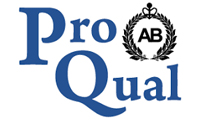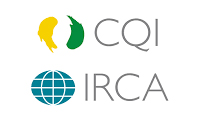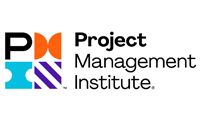Workplace hazards occur when the working environment can cause injury, disease, or death. Many diverse parts of the working world can cause risks, including equipment, hazardous products, unsafe working practices, and human behavior.
Hazards pose an elevated risk to lone employees since they are less likely to receive timely assistance from coworkers. Our knowledge center guides look at the risks that lone workers face, such as those working in housing, utilities, field services, local governments, charity, and health.We’ll look at the six sorts of workplace hazards and what you can do to avoid them.
Types of Workplace Hazards
Workplace risks are classified into six categories: safety, biological, physical, ergonomic, chemical, and workload hazards.
1) Hazards to one’s safety
Employees who operate with machinery or on construction sites are more likely to be exposed to safety concerns. Slips, trips, and falls, as well as operating dangerous machinery and electrical hazards, are all safety concerns.
2) Biological hazards
Biological threats are exceedingly hazardous. These include hazardous substance exposure and infections connected with working with animals, people, or infectious plant materials. Employees in hospitals, labs, and other outside occupations are vulnerable to biological dangers.
3) Physical hazards
Physical hazards can influence persons who work in hazardous areas or in extreme weather situations. Workers who are constantly exposed to loud noise, radiation, sun rays, and UV rays may be at danger.
4) Ergonomic hazards
Ergonomic hazards harm people whose jobs place a burden on their bodies. Manual jobs that demand lifting or sitting for extended periods of time might be harmful over time. These hazards may not be obvious at first, making them considerably more difficult to spot. Your employees may be injured if their work stations are not correctly set or if they have bad posture when conducting manual tasks and heavy lifting.
5) Chemical hazards
Chemical dangers mostly endanger people whose jobs require them to work with hazardous liquids, solvents, or flammable gases. Individuals working in cleaning facilities, engineers, and field-based staff are the most likely to be affected. Harmful chemical exposure can result in disease, skin irritation, breathing difficulties, and, in extreme situations, death.
6) Workload hazards
Job hazards are difficulties that can create stress or strain, such as a heavy workload, violence, or hostility. These hazards can occur in every employment capacity. However, because of their isolated work environment, lone workers may find it difficult to express problems or become a target for anti-social behavior.
Combating Workplace Hazards
It is critical for both employers and employees to grasp the concerns surrounding workplace risks and hazards. Key concepts to comprehend include:
Why is workplace health and safety so important?
Workplace health and safety is critical to ensuring the safety of everyone who comes in touch with your company. The history of workplace safety has demonstrated that if we do not prioritize employee well-being, the consequences can be severe. Today, strong legislation and sanctions are in place to guarantee that organizations and employees implement safe working practices. Thankfully, the implementation of legislation, as well as a greater emphasis on health and safety training, procedures, and policies, has resulted in a drop in workplace fatalities and injuries worldwide.
Legislation and occupational health and safety
To be on the right side of the law, businesses must ensure that they understand current health and safety rules. Businesses in the United Kingdom must follow rules such as the Health and Safety at Work Act 1974 and the Workplace Health and Safety Regulations 1992. Legislation varies from country to country; for example, the United States, Canada, Australia, and New Zealand all have different laws.
It is also critical that employees understand their duties for workplace health and safety, as both employers and employees share responsibility for establishing a safe working environment.
Who is in charge of workplace health and safety?
When it comes to workplace health and safety rules, both employers and employees have duties. According to the law, it is every employer’s responsibility to guarantee the health, safety, and welfare of all employees at work, to the greatest extent reasonably practicable.
While employers have the majority of the responsibility, employees must also ensure that they are working safely. This includes correctly using equipment, following any training given to them, and reporting and/or removing any risks they encounter.
Health and Safety Risk Assessments
Health and safety risk assessments are an important aspect of workplace risk management because they assist you in identifying workplace dangers. For lone employees, the sorts of hazards and methods to minimize them can differ. When completing risk assessments, lone workers should be examined separately to ensure their specific safety needs are satisfied, such as by providing specialized training or issuing lone worker panic sirens.
Dynamic risk evaluations
Dynamic risk assessments are risk assessments performed ‘on the fly’ to assist employees in identifying and mitigating workplace dangers. They are a specialized talent that necessitates appropriate health and safety training for personnel. Several solutions have been developed for lone working personnel to help reduce risk on the job, including apps that provide support in the event of an emergency.
Policies and procedures for health and safety
Health and safety policies and procedures are critical in ensuring that everyone understands their roles in keeping the workplace safe. A health and safety policy outlines your organization’s overall approach to health and safety. It should detail how an employer will manage health and safety in their workplace, including who is responsible for what, when, and how. Employers with more than five employees must publish their health and safety policies in writing.
How critical is health and safety training?
When it comes to identifying and dealing with occupational hazards, training is essential. Effective occupational training can be broad in scope, but it must also teach the appropriate response to hazards encountered in specific work scenarios.
- Training must include creating an awareness of hazards and risks.
- The proper preparation, usage, and upkeep of equipment.
- The proper processes for reporting flaws and issues.
- Speaking with coworkers, especially when working alone in dangerous situations dealing with other people in the workplace, including the general public.
Creating a positive workplace safety culture is also an important component of getting employees on board with health and safety. A positive safety culture is fostering an environment in which employees feel free to express any concerns they may have without fear of repercussions. A positive safety culture is also good for employee enthusiasm and productivity.
Ahlan Safety provides cost effective services to an organizations to attain an easy and effective approach to monitor the health and safety of their workers. It offers safety training to businesses with real-time safety updates to increase the productivity levels of their employee.For any query and information contact them.








